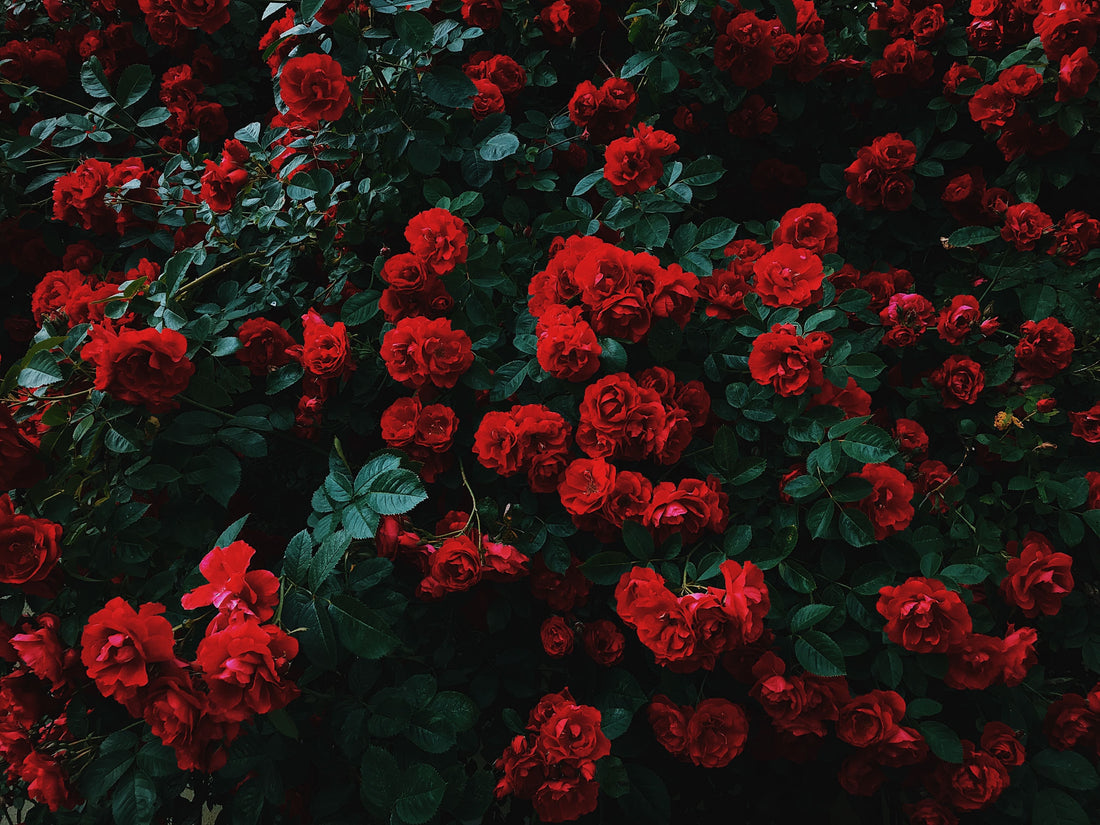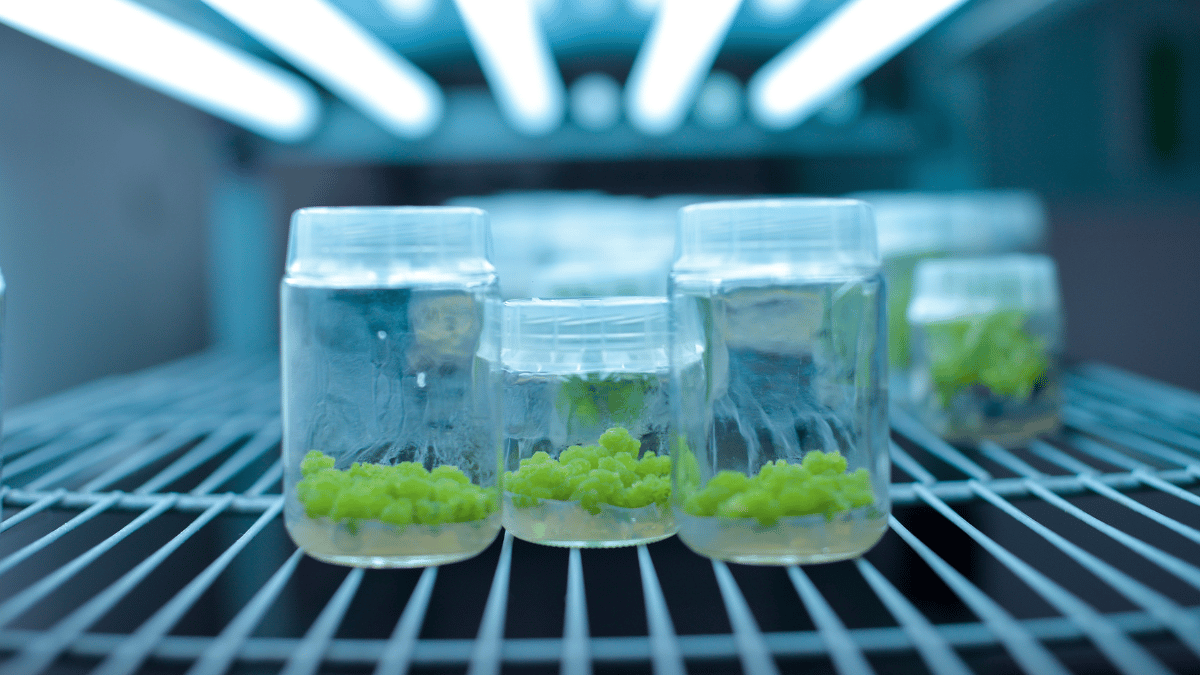
Tissue Culture Fundamentals: Culturing Roses!
As a content and community manager, I leverage my expertise in plant biotechnology, passion for tissue culture, and writing skills to create compelling articles, simplifying intricate scientific concepts, and address your inquiries. As a dedicated science communicator, I strive to spark curiosity and foster a love for science in my audience.


The Queen of Flowers
Rose plants, also known as the queen of all flowers, are extremely popular for their cut flowers. They are always a center of attraction for their beauty and fragrance. They are available in several colors to intensify the beauty of your surroundings. Different colors of roses register different emotions; The signature red rose given to a person represents love in its purest form! The flowers have sky-high demands in national and international markets because of their jaw-dropping beauty.
How is the demand for roses fulfilled? Can roses grow in all locations, including different climates? What are the requirements for the mass cultivation of these beautiful plants? Can it be grown by the most advanced tissue culture techniques?
Let’s look at all the answers to these questions!

Requirements for rose cultivation using the conventional technique
The most commonly cultivated rose species is Rosa hybrida. The Rosa genus involves more than 1400 cultivars and 150 species. Apart from its cut flowers use, roses are cultivated for medicinal purposes, essential oils, and produce vitamin C. Rose plants are cultivated using both, conventional and tissue culture techniques. The technique you choose always depends on your purpose or goal of producing these plants.
The four conventional techniques to cultivate rose plants are: grafting, cutting, layering, and budding. You can learn about these techniques in “Seven Methods of Plant Propagation”. Currently, 20,000 cultivars of roses are commercially produced, belonging to 8 different species. Given below are the requirements for growing roses.
- Climate: At Least 6 hours of bright day-light is important for proper growth. The climate should be moderately cool with free ventilation.
- Soil: Loam soils with pH 5.0-6.0, with the right drainage system, are best to grow rose plants. The soil is rich in organic nutrients for the healthy development of plants.
- Planting and Spacing: Prepare cutting with 2-3 buds and dig a small pit of 30 x 30 cm to accommodate the plant. Keep suitable spacing of 40 x 20 cm between each cutting.
- Propagation: T-budding technique is used to propagate roses through cutting. In this technique, the cut bud is inserted into a T-shaped incision on the stem.
- Manure and fertilizer: For the new plants, add manure at the time of preparing the pit. And, for the established plants, add well-decomposed FYM (Farmyard manure) 8-10 kg/pit just after pruning.
Diseases most likely affecting rose plant growth
The major drawback of cultivating the plants using conventional techniques is their inability to avoid insect and pest attacks. The rose plants are attacked by aphids and chafer beetles. Some of the common diseases that risk the plant growth include: Die-Back disease (appears after pruning; the whole plant die progressing upward to downward), Black Spot disease (Dark brown and black spot on leaves), and Powdery mildew (white powder on the stalk and leaves of the plant).
How does micropropagation/mass cultivation of roses by tissue culture can help?
Vegetative propagation is a predominant technique to culture roses. However, it has many limitations that only are overcome by the tissue culture technique. Asexual means of rose propagation don’t ensure the health of the plants. It also doesn’t guarantee to provide disease-free plants or products. The diseased plants affect the flower quality and production and decrease their market value. The other limitation of the technique includes specific season requirements, slow multiplication rate, laborious, and time-taking tasks with a very low percentage of success.
The benefits tissue culture provides include:
- Producing disease-free plants
- Improved quality of flowers
- Higher multiplication rate
- Rapid and mass production in less area
- Maintenance of the original genome of the plant and production of hybrid plants as well.
- Production of propagules throughout the year
- Plants can easily be grown off-season
It has been estimated that around 40,000 plants can be cloned, from a single rose, using the tissue culture technique in one year. Kenya’s flower industry is one of the largest flower industries in Africa and the biggest exporter of roses in the world. It made £77 million by selling flowers in 2003.
Stages of rose plant tissue culture
Meristem culture is one of the most popular techniques to produce disease-free plants. In this technique, apical buds or nodal segments are cultured to regenerate multiple shoots. The stages involved in the technique include:
- Initiation of aseptic cultures: It includes the choice of right explant and its surface sterilization to prepare it for the next step. Vegetative meristems are suitable to enhance axillary branches. The nodal explant is the most extensively used explant for rose propagation.
- Shoot Multiplication: The factors that affect the shoot multiplication include the genotype of the plant, chosen plant species, inorganic and organic salts in the multiplication medium, carbohydrates, growth hormones, and other physical factors like light, temperature, and humidity.
- Rooting of micro shoots: The proper development of roots depends on the interaction of internal and external factors. It depends on the species of the plants, explant age, Media composition, growth hormones, and amount of carbohydrates present in the media.
- Hardening and transfer of tissue culture-raised plants: Transferring plantlets to the greenhouse is a critical step. You can use cellulose plugs that protect and support the root growth at its initial stages. Always use a ventilated culture vessel to avoid desiccation of platelets during transfer.
In the coming next week’s article, you will learn the protocol of culturing rose plants using nodal explants. Tissue culture has been a life-savior technique for industries focused on producing horticulture and floriculture plants.
Which plant are you growing using the tissue culture technique? Write to us on the email ID anjali@plantcelltehnology. Share your experiences and fun of working with lovely plants.
Happy culturing!!

References
- Pati, Pratap & Rath, Siba & Sharma, Madhu & Sood, Anil & Ahuja, Paramvir. (2006). In vitro propagation of rose - A review. Biotechnology advances. 24. 94-114. 10.1016/j.biotechadv.2005.07.001.
- Nizamani, Faiza & Nizamani, Ghulam Shah & Nizamani, M. Rashid & Ahmed, Saeed & Ahmed, Abuzar. (2016). Propagation of Rose (Rosa Hybrida L.) Under Tissue Culture Technique. International Journal of Biology Research. 1.
- Mweu, Cecilia & Nyende, Aggrey Bernard. (2010). ROSE (Rosa hybrida) Micropropagation from nodal explants of cultivars.
- https://www.agrojournal.org/19/06-04.pdf
- http://www.ijbiotech.com/article_7014_29f3492c705d...
- https://www.krishisandesh.com/rose-cultivation-guide/
- https://agritech.tnau.ac.in/horticulture/horti_flo...
Blog Categories
View by Level
Popular Blogs

Callus Culture: Definition and Applications
Introduction Tissue culture is not just one technique! Yes, you heard right! As you know, tissue culture is an advanced...
Read More
6 Plant Tissue Culture Books to Keep Learning
Introduction Most of us are fans of books when it comes to learning a topic in detail and in a...
Read MoreSubscribe to Our Newsletter








Join the conversation
Your email address will not be published. Required fields are marked